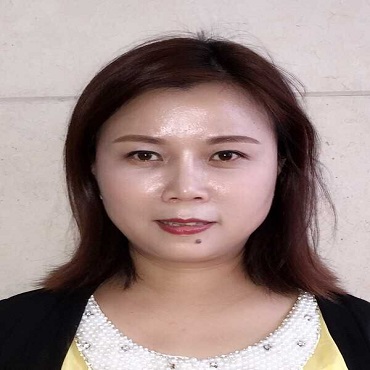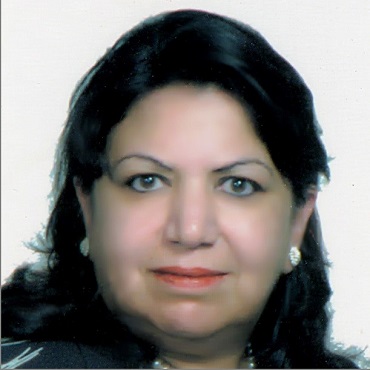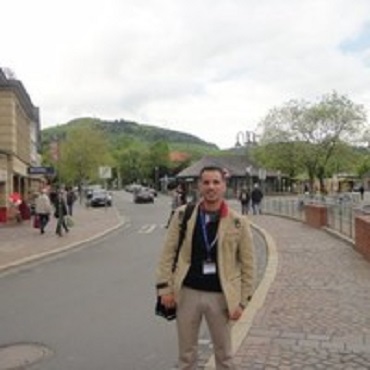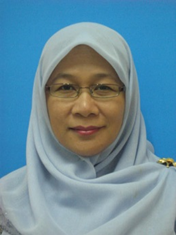Scientific Program
Keynote Session:
Title: Surface nanocoatings inside pores of metallic skeletons improving nesting and proliferation human living cells
Biography:
Prof. Leszek Adam Dobrzański, DSc, PhD, MSc, Eng, Hon. Prof., M Dr HC is a Full Professor and the Director of the Science Centre of the Medical and Dental Engineering Centre for Research, Design and Production ASKLEPIOS in Gliwice, Poland. In 1971-2017 he worked at the Silesian University of Technology in Gliwice, Poland as Full Professor, Vice Rector, Dean of the Faculty, Director of the Institute and Head of Division. He was conferred abroad a title Honorary Professor in Lviv, Ukraine and 3 times titles of Doctor Honoris Causa in, Bulgaria, Ukraine and Hungary. His scientific output includes about 2500 scientific publications, including about 50 books and monographs and 50 chapters in books and monographs. He has 55 position in ranking most cited Polish scientists of all scientific disciplines and is included to the group of 5% most read Authors by the Academia Platform.
Abstract:
| The lecture concerns the own newly developed category of nanostructured biological-engineering materials. The hybrid technology using selective laser sintering SLS with the nanocoatings by atomic layers deposition ALD method inside the micropores of the skeletons improving the nesting and proliferation of living cells were applied. As input material alternatively powders of both pure titanium and Ti6Al4V alloy were used. The TiO2 and Al2O3 coatings were deposited inside micropores using the ALD method and hydroxyapatite with the sol-gel submersion coating method. The properties and structure were investigated using advanced HRTEM research. Due to the presence of deposited TiO2 and Al2O3 nanostructured coatings, conditions of nesting and proliferation of live cells of the hFOB 1.19 (Human ATCC - CRL - 11372) osteoblasts on the surface of micropores are significantly improved. The nanostructured hydroxyapatite coatings after a relatively short time will biodegrade, and living cells will be in contact with a metal skeleton that is not covered by any coating. Therefore it is inapplicable for long-term implants. The performed research fully confirmed the original idea of the microporous implant-scaffolds production as a new type of medical devices. |
Title: Exploring novel functional molecules in symbionts
Biography:
Ren Xiang TAN obtained his PhD from Lanzhou University with his dissertation completed at Technical University of Berlin, Germany. He worked as a visiting professor at University Lausanne, Switzerland, and University of Calfornia (San Diego), USA. Having been a full professor at Nanjing University since 1994, he took in 2016 the vice-presidency at Nanjing University of Chinese Medicine, one of the leading institutions specialized in Chinese medicine. He has published more than 300 papers in reputed journals and 4 monohraphs and served/is serving as editorial (advisory) board members of 16 scientific journals including Natural Product Reports.
Abstract:
The impact of natural products on drug discovery pipelines keep kindling our interest in structurally unpredictable low-molecular-weight biomolecules as a promising source of pharmaceutical leads. Meanwhile, scientists are frequently frustrated by re-isolations of known compounds from new organism collections since countless natural products have been identified since Serturner’s characterization of morphine in 1806. To address this frustration, the affordability and chemical space expansion of minor new natural products become a great concern, and chemical synthesis has been performed to produce organism-originated complex molecules and natural product-like compounds with privileged scaffolds. To add more skills to the existing arsenal of searching for highly-valued new chemicals like drug leads, this talk will present the discovery and biosynthesis of bioactive secondary metabolites from symbionts, some of which are evidenced to be evolutionally advanced owing to their non-stop interaction with multicellular hosts such as plants, insects and fishes. This presentation will be focused on the structure characterization and biosynthetic mechanism of bioactive secondary metabolites with unprecedented carbon skeletons from the cultures of symbiotic microorganisms such the marine-derived Curvularia sp.
Title: Anisotropy of mechanical and physical properties of an AZ31 magnesium alloy prepared by accumulative roll bonding.Identification of new alleles in salinity tolerant rice local cultivars through phenotypic and genotypic screening
Biography:
Prof. RNDr. Zuzanka Trojanová, DrSc., Charles University in Prague, Faculty of Mathematics and Physics, Department of Physics of Materials. Her research activity has been focused on the complex investigation of the mechanical properties of metals, alloys and metal matrix composites. She is author and co-author of about 400 scientific papers, mostly in international journals.
Abstract:
Magnesium alloys with their high specific strength and low weight are used as structural materials in different applications. They have suitable mechanical and excellent damping. Magnesium wrought alloys, such as for instant AZ31, are needed for applications where their weight is important. In the accumulative roll bonding (ARB) technique, stacking of a material and conventional roll-bonding are repeated in the process. Samples for further studies were cut from the sheets so that the longer axis was either parallel (L samples) or perpendicular (T samples) to the rolling direction [1].
Tensile tests were performed at temperatures ranging from room temperature up to 300 °C. Different results were obtained for L and T samples. This anisotropy decreases with increasing number of rolling passes and increasing deformation temperature.
The amplitude dependent internal friction was measured at room temperature. Anelastic planar anisotropy of internal friction was observed; the logarithmic decrement was higher in rolled sheets cut perpendicular to the rolling direction than that in the samples where the longer axis was parallel to the rolling direction.
The linear thermal expansion of samples was measured in the temperature range from room temperature up to 400 °C. Planar anisotropy of the thermal expansion was found.
Thermal diffusivity and thermal conductivity were measured after 1 and 2 passes through the rolling mill. Thermal diffusivity was measured with the laser-flash method in the temperature range between 20 and 350 °C. Thermal conductivity depends on the number of rolling passes. Results are discussed in terms of microstructure and texture of materials prepared with ARB technique
Oral Session 1:
- Organic Chemistry| Physical Chemistry | Inorganic Chemistry |Polymer Chemistry| Surface Chemistry
Title: The active compound screening and ameliorate efficacy of the three Tibetan classical prescriptions for the cerebral ischemia injury therapy
Biography:
Rui Tan, m.d.,Ph.D., working as a professor and doctoral tutor in the field of natural medicine chemistry and traditional Chinese medicine, College of Medicine, College of Life Science and Engineering, Southwest Jiaotong University. The main research direction: standardization of drug quality and safety, national medicine protection,active research and effective utilization of resources and industrialization.
Abstract:
Title: Dye-sensitized solar cells with metal selenides as electrocatalysts
Biography:
Zhong-Sheng Wang has completed his PhD from Peking University, China. He is currently the professor at the Department of Chemistry, Fudan University, China. He has published 116 papers in reputed journals with citations of 10300 and h-index of 48 and has been serving as an editorial board member of Nano.
Abstract:
As one of the key materials in dye-sensitized solar cells (DSSCs), the counter electrode (CE) plays a crucial role in completing the electric circuit by catalyzing the reduction of the oxidation state to the reduction state for a redox couple (e.g. I3-/I-) in the electrolyte at the CE/electrolyte interface. To lower the cost caused by the typically used Pt CE, which restricts the large-scale application due to its low reserves and high price, great effort has been made on developing new CE materials alternative to Pt. Metal selenides have been widely used as the electrocatalysts of oxygen reduction reaction and the light-harvesting materials for solar cells. Our group first expanded their applications to the DSSC field by using in situ growth Co0.85Se nanosheet and Ni0.85Se nanoparticle films as the CEs.1 This finding has inspired extensive studies on developing new metal selenides in order to seek more efficient CE materials for low-cost DSSCs. Metal selenide CEs can be prepared via several methods, among which the in situ growth strategy is superior to other methods, because it offers more homogeneous dispersion on the substrate, stronger adhesion to the substrate, and more effective catalytic sites. The effects of morphology and stoichiometric ratio on the electocatalytic and photovoltaic performance are discussed in this paper (Image).2 It is found that metal selenides demonstrate excellent catalytic activity with low-cost and good stability, and they will become strong competitors as CE materials for large-scale applications.
.
Title: Growth of Fe2O3 nanoparticles on α-MnO2 nanotubes by hydrothermal routs
Biography:
Abstract:
Title: Screening of Peroxidase activity in peels of different plants
Biography:
Abstract:
With increasing environment pollution and the trend toward green chemistry, the waste recycling and biomass usage has become a major goal for all researchers in the world. Therefore, this study aimed to use the plant peels as costless source for the extraction and isolation of peroxidase (POD) which has many application in various scientific and industrial uses. The presence of POD was screened by measuring its activity in different plant wastes. Melon peels was found to have the highest activity and specific activity 8.64 U/g of peels and 5.02 U/mg of proteins, respectively. Among the most local classes of melon present in Iraq (Hafidh Nafsah) was found to contain the highest activity of this enzyme. The optima temperature and pH were measured for Hafidh Nafsah peel POD and found to be 70 C° and 7.0 respectively. Upon study the heat and pH stability of this enzyme, the results show, the enzyme was found to be stable at 60 C° for up to 190 minutes with a loss 20% only of its activity. Meantime, the enzyme exhibited a relative stability at both acidic and basic pH (2.5 & 9.5) for up to one hour. Furthermore, a pilot experiment was carried out as a trail to purify POD extracted from Hafidh Nafsah melon peels using its heat stability characteristic where a 1.45 fold of purification and 85.38 % yield was obtained after heating the extract for 3 hours at 60 C°.
Title: X-ray Diffraction Analysis for Main peaks and the Noises of Single and Multi-Walled Carbon Nanotubes
Biography:
Firas H. Abdulrazzak has completed his PhD at the age of 39 years from Babylon University College of science / chemistry department. He is working in chemistry Department College of education for pure Science Diyala University. He has published more than 22 papers in reputed journals. His interest focuses on synthesis and applications of nanomaterials and clean energy. He obtained two patents in synthesis multi-walled carbon nanotubes.
Abstract:
The XRD analysis for different types of carbon nanotubes shows the main two peaks at 2Ó¨ ≈ 25∘ and 43∘ with many noises for all the line from 5∘ to 80∘. Most of noises were removed by using many computerized programs which depend for this purpose, while it is referred to nature of tubular structure with one or many sheets of graphene. The nature of tubular structure influence with diffraction beams of diffraction x-ray which can be explained by Bragg’s law and Scherer equation. The most of this noises represent and refer to the nature of structure which reduces with increase graphene sheets, or when transfer from graphene to graphite form. Thus the works concern with important fact which is removing the noise delete and hiding the specific proprieties of CNTs.
Title: Synthesis of Red mud based geopolymers for the replacement of OPC
Biography:
Abstract:
| This work presents a way to valorize red mud, rice husk ash, a major waste from combustion of rice husk and white clay as a raw material for the production of geopolymers that are environmentally friendly and only requires low energy to make and have diverse potential application. A wide range of parameters in the geopolymerization reaction, consisting of RHA to RM weight ratio, variable concentration of sodium hydroxide. RHA, RM and white clay ratio and sodium silicate solutions were examined to understand their influence on the compressive strength of the end products- RHA, RM and white clay based geopolymers. The geopolymers were characterized by X-ray diffraction, FTIR. The result of compression testing indicates that the compressive strength of the studied RHA, RM and white clay based geopolymers are in the range of 2.2 to 19.5 Mpa, which is comparable with that of almost all Portland cement. In addition, the utilization of RHA, RM and white clay based geopolymers in practice is able to bring both environmental and economic advantages. The finding suggest that these wastes can be reused to make geopolymers that can find application in civil infrastructure constructions. |
Title: Structure and biosynthesis of bioactive metabolites from symbiotic microbes
Biography:
Ren Xiang TAN obtained his PhD from Lanzhou University with his dissertation completed at Technical University of Berlin, Germany. He worked as a visiting professor at University Lausanne, Switzerland, and University of Calfornia (San Diego), USA. Having been a full professor at Nanjing University since 1994, he took in 2016 the vice-presidency at Nanjing University of Chinese Medicine, one of the leading institutions specialized in Chinese medicine. He has published more than 300 papers in reputed journals and 4 monohraphs and served/is serving as editorial (advisory) board members of 16 scientific journals including Natural Product Reports (IF > 11).
Abstract:
The impact of natural products on drug discovery pipelines keep kindling our interest in structurally unpredictable low-molecular-weight biomolecules as a promising source of pharmaceutical leads. Meanwhile, scientists are frequently frustrated by re-isolations of known compounds from new organism collections since countless natural products have been identified since Serturner’s characterization of morphine in 1806. To address this frustration, the affordability and chemical space expansion of minor new natural products become a great concern, and chemical synthesis has been performed to produce organism-originated complex molecules and natural product-like compounds with privileged scaffolds. To add more skills to the existing arsenal of searching for highly-valued new chemicals like drug leads, this talk will present the discovery and biosynthesis of bioactive secondary metabolites from symbionts, some of which are evidenced to be evolutionally advanced owing to their non-stop interaction with multicellular hosts such as plants, insects and fishes. This presentation will be focused on the structure characterization and biosynthetic mechanism of bioactive secondary metabolites with unprecedented carbon skeletons from the cultures of symbiotic microorganisms such the marine-derived Curvularia sp.
Title: Screening of Peroxidase activity in peels of different plants
Biography:
Hathama Razooki Hasan is a professor of biochemistry at chemistry department/College of Science/Baghdad University, where she teaches undergraduates & postgraduates students’ different aspects of biochemistry. She received her BSc. in biochemistry from Chemistry department/College of Science/ university of Baghdad. She pursued her postgraduate study, at the University of Nottingham in the United Kingdom, receiving a PhD degree in Biochemistry. She held the position of the head of chemistry department for the period of October 2008- the end of September 2011. Professor Hathama has a scientific career, supervising many MSc & PhD students, & publishing many research papers inside Iraq, & abroad.
Abstract:
| With increasing environment pollution and the trend toward green chemistry, the waste recycling and biomass usage has become a major goal for all researchers in the world. Therefore, this study aimed to use the plant peels as costless source for the extraction and isolation of peroxidase (POD) which has many application in various scientific and industrial uses. The presence of POD was screened by measuring its activity in different plant wastes. Melon peels was found to have the highest activity and specific activity 8.64 U/g of peels and 5.02 U/mg of proteins, respectively. Among the most local classes of melon present in Iraq (Hafidh Nafsah) was found to contain the highest activity of this enzyme. The optima temperature and pH were measured for Hafidh Nafsah peel POD and found to be 70 C° and 7.0 respectively. Upon study the heat and pH stability of this enzyme, the results show, the enzyme was found to be stable at 60 C° for up to 190 minutes with a loss 20% only of its activity. Meantime, the enzyme exhibited a relative stability at both acidic and basic pH (2.5 & 9.5) for up to one hour. Furthermore, a pilot experiment was carried out as a trail to purify POD extracted from Hafidh Nafsah melon peels using its heat stability characteristic where a 1.45 fold of purification and 85.38 % yield was obtained after heating the extract for 3 hours at 60 C°. |
Title: Alizarin red S ARS Removal on rGO / Fe3O4Nanocomposite by Adsorption from Contaminated Water
Biography:
Ayad Alkaim has completed his PhD at the age of 32 years from Babylon University and Proffesor Visitor from School of Technic Chemie, Hannover University, Germany. He has published more than 30 papers in reputed journals and has been serving as an editorial board member in several journals of sciences.
Abstract:
In this study, graphene oxide (GO), produced using the modified Hummer’s method, (rGO) produced using ultra violet light. (rGO / Fe3O4) composite prepared by hydrothermal method. and it`s used as adsorbent to remove Alizarin Red S (ARS) dye from aqueous solution. Characterizations using Field emission scanning electron microscopy (FE-SEM) , powder X-ray diffraction (XRD) , FTIR , energy dispersive X-ray spectroscopy (EDX) were carried out on the rGO / Fe3O4 before the ARS adsorption experiments. The adsorption isotherms studies were conducted under different conditions (pH = 3-11, ARS concentration = 5-40 mg/L and Weight of composite= 0.005-0.25 g ) to examine the adsorption efficiency of the rGO / Fe3O4 towards ARS in aqueous solution. The obtained results showed that the maximum adsorption capacity of the rGO / Fe3O4 towards ARS can achieve up to ~0.1g for the adsorption at 10 mg/L ARS at 50 C. and the maximum adsorption capacity of the rGO / Fe3O4 towards ARS can achieve up to pH=7 and 0.25 g for composite.
Title: X-ray Diffraction Analysis for Main peaks and the Noises of Single and Multi-Walled Carbon Nanotubes
Biography:
Firas H. Abdulrazzak has completed his PhD at the age of 39 years from Babylon University College of science / chemistry department. He is working in chemistry Department College of education for pure Science Diyala University. He has published more than 22 papers in reputed journals. His interest focuses on synthesis and applications of nanomaterial’s and clean energy. He obtained two patents in synthesis multi-walled carbon nanotubes.
Abstract:
The XRD analysis for different types of carbon nanotubes shows the main two peaks at 2Ó¨ ≈ 25∘ and 43∘ with many noises for all the line from 5∘ to 80∘. Most of noises were removed by using many computerized programs which depend for this purpose, while it is referred to nature of tubular structure with one or many sheets of grapheme. The nature of tubular structure influence with diffraction beams of diffraction x-ray which can be explained by Bragg’s law and Scherer equation. The most of this noises represent and refer to the nature of structure which reduces with increase grapheme sheets, or when transfer from grapheme to graphite form. Thus the works concern with important fact which is removing the noise delete and hiding the specific proprieties of CNTs.
Title: asdfghj
Biography:
Abstract:
Use of inhibitors for the control of corrosion of metals is more accepted practice these days. For over 100 years chromium has been used as inhibitor but due to its toxic and carcinogenic nature its use is limited and banned now. So, Organic compounds with N, S and O are studied as alternative inhibitor and are found efficient as well. But these are also toxic and expensive. So, these days phytochemical compounds from plants products are studied to develop green corrosion inhibitor as they are environmentally friendly, less toxic, cheap and renewable.
Mahonia nepalensis extract in methanol was studied as corrosion inhibitor in 1M H2SO4 by electrochemical method (Potentiodynamic polarization), weight loss method, electrochemical impedance spectroscopy and scanning electron microscopic (SEM) imaging for mild steel. Corrosion efficiency of methanol extract in acid solution was found 94.91% for mild steel sample and it was 98.43% when extract was adsorbed on sample in acidic medium. Electrochemical method showed that the extract is mixed type inhibitor. Calculation from electrochemical method, electrochemical impedance spectroscopy and weight loss showed that the efficiency increases with increase in concentration. Efficiency varied from 95.2% (for 200ppm) to 98.43% (for 1000ppm) in electrochemical method , 89.20% (for 200 ppm) to 97.98% (for 1000 ppm) in electrochemical impedance spectroscopy and 89.83% (for 200ppm) to 95.12% (for 1000ppm) in weight loss method. In electrochemical impedance spectroscopy, increment in diameter of Nyquist plot indicates adsorption of inhibitor molecules on metal surface which inhibits the corrosion rate. Weight loss method showed that efficiency increases with increase in time and temperature. Efficiency varied from 93.01% in 3 hrs. to 94.66% in 24 hrs. for 1000 ppm solution and efficiency ranged from 92.93 % at 25°C to 97.08% at 45°C for 1000ppm solution in 6 hours and decreases after 45ºC. Decrease in efficiency with increase in temperature, the activation and free energies for the inhibition reactions support the mechanism of physical adsorption. In SEM image of surface of metal sample immersed in 1M H2SO4 for 24 hours, surface was highly porous with deep and large cracks but surface was relatively smooth by the formation of protective film on surface when immersed for same time after addition of inhibitor. The adsorption of extract on C-steel surface is consistent with the Langmuir adsorption isotherm.
Oral Session 2:
- Materials Science and Development | Future of Materials | Entrepreneurs Investment | Mining, metallurgy and materials science | Material chemistry and physics | Materials characterization
Title: Study and Fabrication of Cold Plasma Treatment for Mushrooms Spawn
Biography:
Abstract:
Cold plasma (CP) technology has found favor in the agricultural industry for changing seed coat structures, increasing the permeability of seed coats and stimulating seed. However, there are still leaking study of mushroom spawns application. The Pleurotus ostreatus (oyster mushrooms) spices spikes in global demand, encouraging Malaysia to take advantage of the lucrative trade. Therefore, the objectives of this study is to evaluate the mushroom spawns wettability for mushrooms germination rate by using CP technology. By using a novel CP pen as shown in Figure, the mushroom spawn will treated by using discharge air. The air generates in a petri dish with a flow rate of 5 L/min by considering three different time exposure (0, 15 and 30 seconds) with 8 kV of supply voltage. Stainless steel rod is a material for electrode pen discharge. The SEM and contact angle analysis were conducting to study the changes in the surface morphology of the plasma treated spawns. The results show an increment of treatment time, increase the mushroom spawn pores and wettability. This creates surface more hydrophilic thus spawn absorbs more water and shorten the germination rate. Based on the results, it can conclude that the CP application can significantly change the spawn wetability and textural
Title: Sterilization of Mushroom Soil by Using Non-Thermal Plasma.
Biography:
Norizah Redzuan has completed her PhD (majoring in Mechanical Engineering) in 2010 from Glasgow University, Scotland. She is the Senior Lecturer in Department of Materials, Manufacturing and Industrial Engineering, School of Mechanical Engineering, Faculty of Engineering, Universiti Teknologi Malaysia. Her research interests is in cold plasma application, machining and microdrilling.
Abstract:
There are numerous methods for sterilizing process. In the mushroom cultivation process, mushroom entrepreneur involved steaming process to sterilize the mushroom soil. However, it required ~2-3 days to complete the process. Therefore, this project is to develop a cold plasma sterilization system for mushroom soil. Non-thermal plasma also refers as cold atmospheric plasma is a new technology that use electric field from voltage breakdown to discharge plasma radiation. The radiation is responsible for bacteria inactivation as it interacts directly to the microorganism without any side effect to the material to be treated. Current conventional sterilization method for the agricultural sector is not efficient, which is time consuming and dangerous if the sterilization used chemical substance. The aim of this project is to design and develop a non-thermal treatment system as shown in image for mushroom soil. The mushroom soil treated with non-thermal plasma using air and helium carrier gas respectively. The stainless steel rod, an inner electrode (cathode) used to discharge the plasma direct into the fertilizer. Copper sheet was wrapped as grounded electrode (anode), connecting to high voltage current. Treated samples are compared with the conventional sterilization system in terms of bacteria concentration (Cfu/ml), pH value and water content. Result obtains a higher reduction of bacteria in samples treated with cold plasma compare to conventional method. As conclusions, non-thermal plasma system can be a sterilization system for mushroom cultivation process.
A PHP Error was encountered
Severity: 8192
Message: trim(): Passing null to parameter #1 ($string) of type string is deprecated
Filename: pastconference/past-program-schedule.php
Line Number: 354
Backtrace:
File: /efsdata/meetingsint-com/application/views/pastconference/past-program-schedule.php
Line: 354
Function: trim
File: /efsdata/meetingsint-com/application/controllers/Pastconference.php
Line: 128
Function: view
File: /efsdata/meetingsint-com/index.php
Line: 317
Function: require_once
Title: The Morphological, Structural, Optical and Antibacterial Characteristics of Cr2O3 Nanoparticles: A Comprehensive Study
Biography:
Naif M. Al-Hada received the B.Sc. degree (with first-class honors) in physics in 2003 and the M.Sc. (Applied Radiation) and Ph.D. degrees in physics (Nanoscience) from the Faculty of Science, Universiti Putra Malaysia (UPM), Malaysia, in 2011 and 2015, respectively. Dr. Al-Hada is an Assistant Professor of Physics. He is currently a Postdoctoral Researcher at Department of Physics, Faculty of Science, UPM. His research interests include nanoparticles synthesis & applications (especially for renewable energy and biomedicine), metallic oxides nanostructures and its antibacterial activity, binary oxide nanostructures for solar cell and sensor applications polymer composites/nanocomposites, conducting polymer nanocomposites and semiconductor nanotechnology applied radiation. He has published more than 30 papers in reputed journals and has been serving as an editorial board member of repute.
Abstract:
Calcination via thermal treatment using a precursor material is employed in the generation of Cr2O3 nanoparticles. Precursor materials included chromium nitrate in addition to a capping agent of polyvinylpyrrolidone. A range of analytical techniques: X-ray diffraction (XRD); energy dispersive X-ray (EDX); transmission electron microscopy (TEM); and Fourier Transform Infrared Spectroscopy (FT-IR) were used to characterise the samples generated. The observation that the Cr2O3 nanoparticles results exhibited hexagonal crystalline structures was demonstrated by XRD analysis. The Cr and O in the Cr2O3 nanoparticle samples was confirmed as original materials using energy-dispersive X-ray spectroscopy and Fourier-transform infrared spectroscopy phase analysis. TEM results demonstrated that the different of calcination temperature from 500 to 800 oC resulted in an increase average nanoparticle size from 4 nm to 16 nm. X-ray photoelectron spectroscopy (XPS) analyses were used to investigate surface composition and valence state of the final nanoparticle product. Assessment of the optical energy gap using the Kubelka–Munk equation was achieved by utilization of diffuse UV–visible reflectance spectra, revealing that the energy band gap reduced with increasing calcination temperature: from 3.12 to 3.01 eV. Furthermore, increasing particle size was also found to be associated with increased photoluminescence as demonstrated by photoluminescence (PL) spectra. Lastly, antibacterial activity of the chromium oxide nanoparticle was assessed in-vitro using Escherichia coli ATCC 25922 Gram (-ev) and Bacillus Subtilis UPMC 1175 Gram (+ev).


















